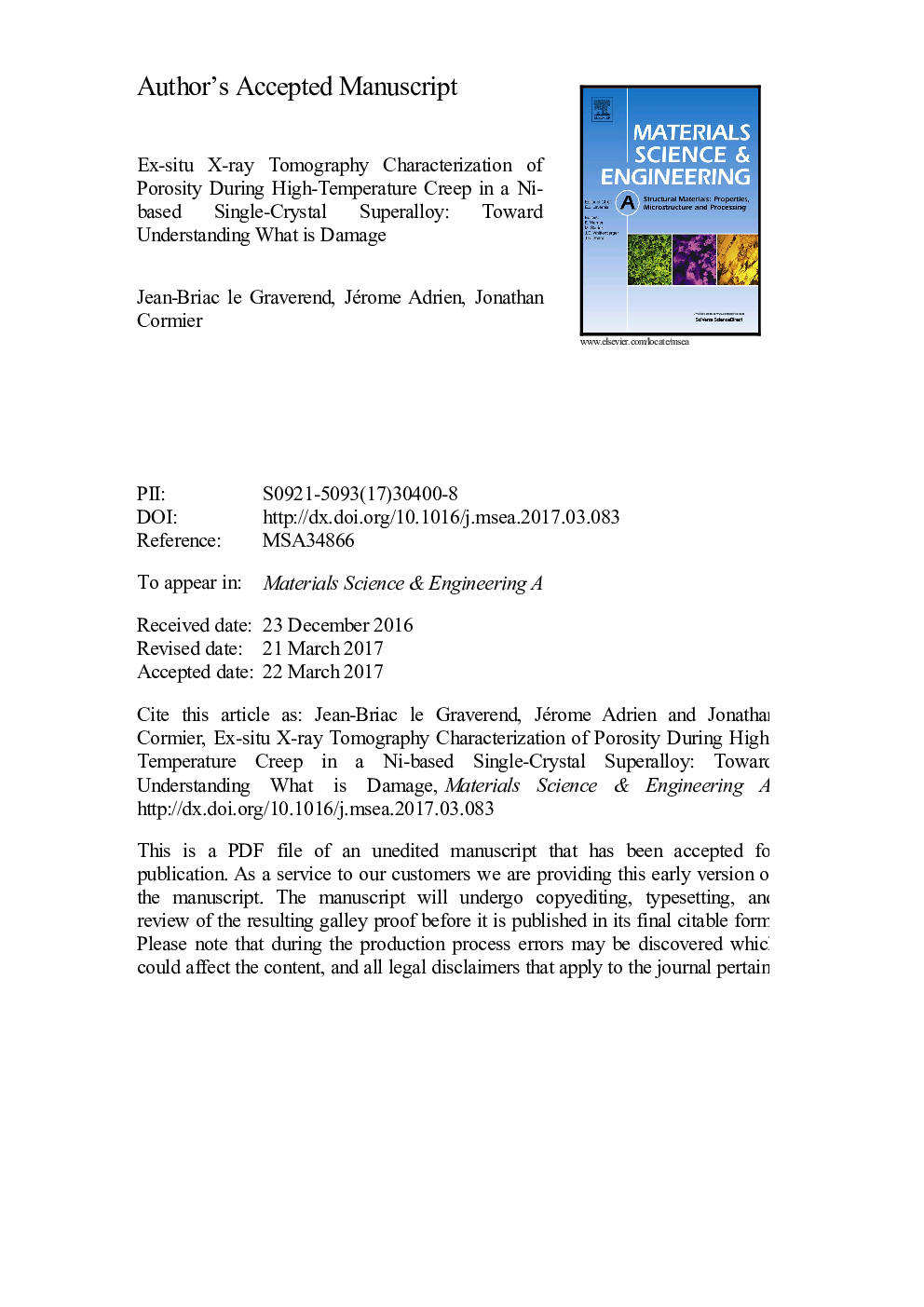| Article ID | Journal | Published Year | Pages | File Type |
|---|---|---|---|---|
| 5455734 | Materials Science and Engineering: A | 2017 | 41 Pages |
Abstract
Creep damage by void nucleation and growth limits the lifetime of components subjected to mechanical loads at high temperatures. For the first time, the porosity of a Ni-based single crystal superalloy subjected to high temperature creep tests (Tâ¥1000 °C) is followed by ex-situ X-ray computed tomography. A large experimental campaign consisting of nine temperature/stress conditions is carried out to determine the kinetics of the damage accumulation by voids. It is, indeed, essential to characterize their evolution to create internal variables describing properly the evolution of damage in a Continuum Damage Mechanics framework. Nonetheless, it is pointed out that the increase in the plastic strain rate during the tertiary creep stage is not necessarily related to the increase in the pore volume fraction for the alloy and temperature range explored (1000-1100 °C). Therefore, it seems that the changes in the microstructure, i.e. precipitation coarsening and γ/γⲠtopological inversion, and the shearing of the γⲠparticles have to be considered further to properly describe the damage evolution. Thus, the Continuum Damage Mechanics theory is undermined and should be replaced by a transformative paradigm taken into consideration microstructural evolutions in order to improve the predictability of further damage models.
Keywords
Related Topics
Physical Sciences and Engineering
Materials Science
Materials Science (General)
Authors
Jean-Briac le Graverend, Jérome Adrien, Jonathan Cormier,
